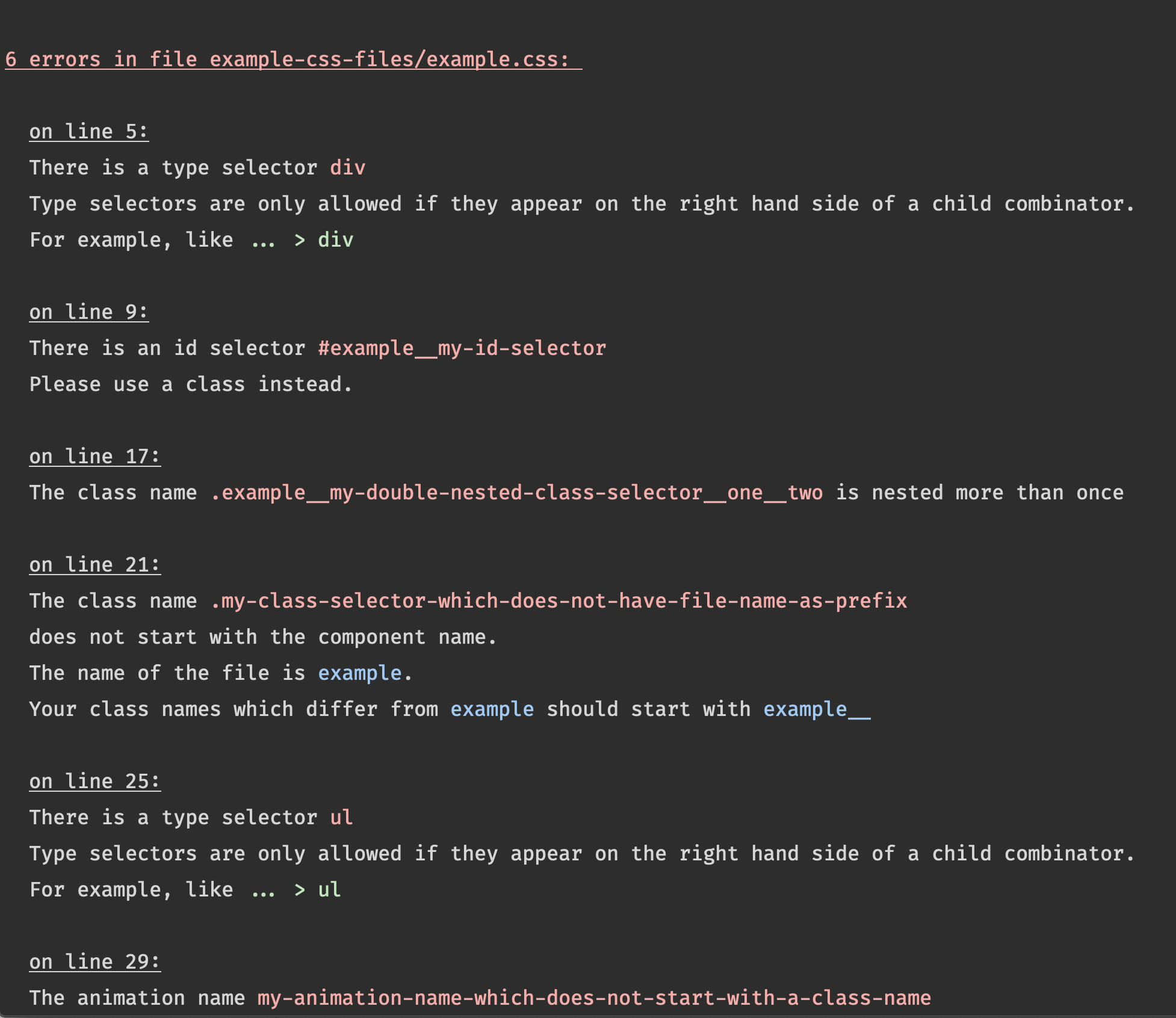csslint 
Linter for diesdas’ CSS architecture.
Why this architecture/a linter?
Most CSS bugs are caused by classes unintentionally overriding other classes. When building websites/interfaces with components this can happen for example if component styles are overwritten by a parent component. The component looks different because of where it’s placed (its context).
In any software system relying on context creates complexity. If one needs to know what the context of a specific piece of code is, one also has to understand all of that context.
CSS in JS tools solve that problem by using inline styles and/or generating class names automatically during a build step. This way developers cannot unintentionally override other components classes, because they don’t even know what the class name will be.
The downsides of CSS in JS solutions are:
- one needs a build step to generate CSS
- some tools require writing CSS in a non-standard way (as objects for example)
- while debugging class names have no meaningful names anymore
Therefore we came up with a CSS architecture which has one major and a few minor rules to get the same benefit of local reasoning for components without the drawbacks of CSS in JS tools.
Rules it checks:
- [x] every class name is prefixed by the component/file name
- [x] also animation names should start with the component name, eg
@keyframes component__my-animation - [x] no multiple nesting in class names, eg
.component__one__twois ill-formed - [x] no type selectors
- [x] no id selectors
Advantages
CSS syntax is a standard. Learn it once.
Even in production we have meaningful class names which helps when we need to debug.
Every browser knows how to load CSS.
Installation
To add it to your project use npm or yarn:
yarn add @diesdasdigital/csslint --dev
npm install @diesdasdigital/csslint --save-dev
Then you can use the linter via npx or in package.json scripts:
{
"scripts": {
"lint": "csslint 'src/**/*.css' --all"
}
}Flags
--all
doesn’t stop on the first invalid file and shows a summary of how many errors it found
--verbose
also logs all valid files it has checked
Ignoring errors
In your projects root folder, create .csslintignore file, which includes new line separate file paths which should be ignored.
Alternatively you can ignore a single line inside of a file by writing the following comment in the previous line:
/* csslint-disable-next-line */
Collaboration
If you want to create PR, we test and develop this tool using these as a baseline:
License
MIT
Created by diesdas.digital
